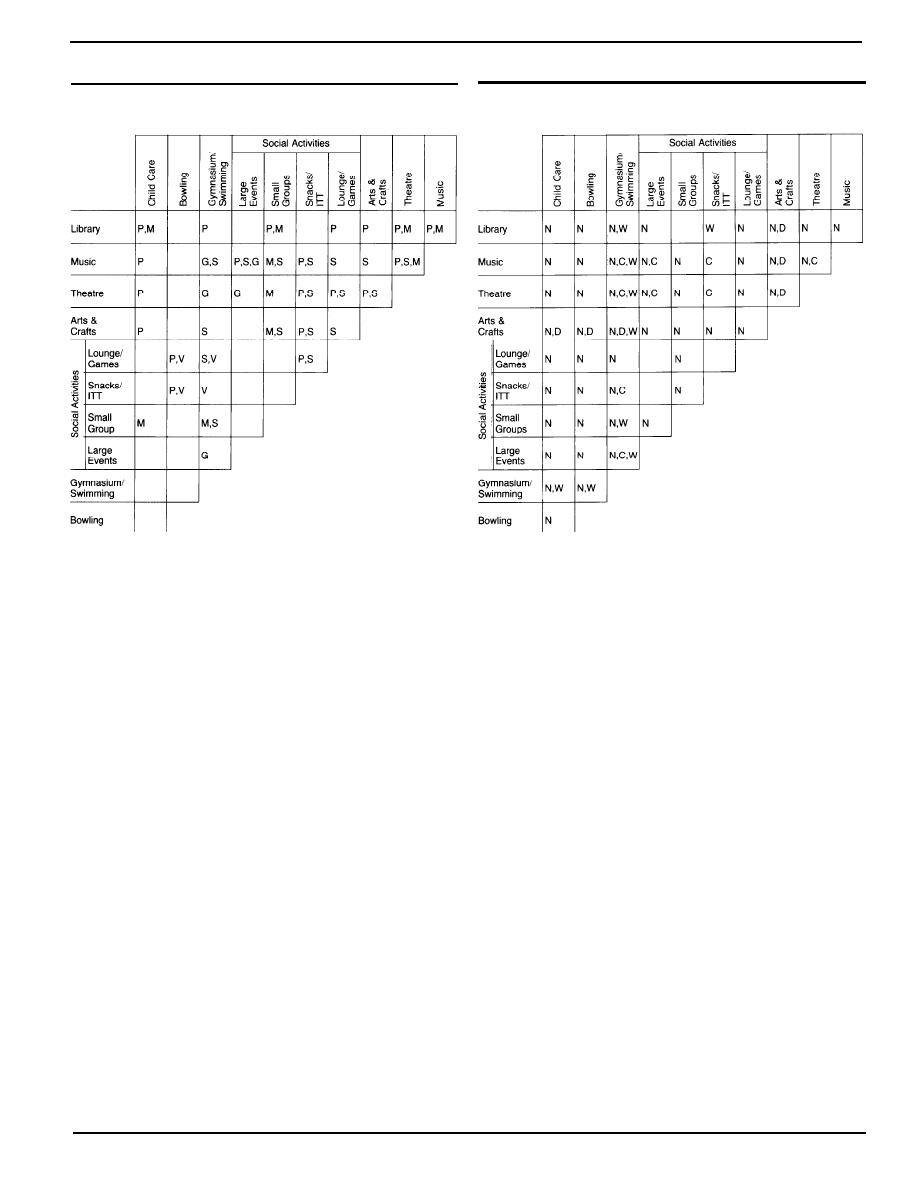
Design Considerations
Table 5 - 2 Program-to-Program Relationships:
Table 5 - 1 Program-to-Program Relationships:
Conflicts
Complementary
Key
Key
N=
Noise intrusion, one way or the other.
P = Proqram coordination potential, or direct support relationship.
D=
Dirt pollution.
M = Multi-purpose meeting room sharing potential.
W=
Unwanted Wetness or food spillage.
G = Gym/auditorium space sharing potential.
C=
User crowd traffic conflict potential.
S = Consolidated operation of supply and sales of equipment and tickets.
V = Visibility relationship between program spaces.
(2) Conflicting Program Relationships (see table
Supply and Sales Consolidation - potential space,
l
operations and staffing consolidation of equipment sup-
5-2):
ply, check-out and sales for various functions -such as
Noise - acoustic intrusions requiring isolation and
l
crafts materials, musical instruments, games and sports
sound-proofing, noise reduction, or distant spacing.
equipment, as well as ticket booking and sales, for ITT,
Dirt - dust, wastes, toxic or noxious products, primar-
l
music and theatre performances, and other events.
ily from various crafts activities like woodwork, ceramics
Visibility - clear visibility between program-areas
and painting which should not be allowed to affect other
l
when required, such as lounge/snack eating area to
program-areas. This may be controlled by space isola-
gymnasium activities, and general visibility from
tion, dust collectors and separately-zoned ventila-
lobby/control and circulation to most activity spaces.
tion/exhaust systems.
Wetness/Food - water, wet activities and foods, from
l
swimming pool and snack bar, should be prevented from
entering particularly sensitive spaces such as library and
musical instrument areas.
Heavy User Traffic - potentially conflicting heavy user
l
traffic from multiple, simultaneous large-group events,
such as theatre performances, spectator sports and
dances, require appropriate design of circulation capac-
ity, separate entrances, or time scheduling.
Page 5 - 17
DG 1110-3-142


 Previous Page
Previous Page
